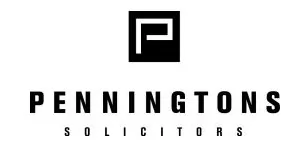Getty Images, the photographic agency, has recently settled a copyright infringement dispute concerning the unauthorised use of one of its images.
Getty claimed that JA Coles, a UK removals firm, used one of Getty's images ('Mother with daughter (6-8) looking at each other and smiling') on its website without paying for it. JA Coles removed the image from its website immediately after receiving notification from Getty of the unauthorised use. However, Getty continued to demand a royalty payment for the use of the image up to the date it was removed from the website, together with a further amount to compensate for the costs it had incurred in enforcing its rights. JA Coles refused to make the payments.
Getty issued a claim in the High Court for copyright infringement but the case settled out of court with Getty receiving nearly £2,000 in damages and interest plus its legal costs. In contrast, a five year licence to use the image would probably have cost much less.
Getty apparently did not recover additional damages for its claim that such infringement undermines its ability to be paid in full for the use of its images. Nor did Getty recover compensation to pay for the specialist image tracking technology it uses to detect unauthorised use of its images on the internet. Getty originally claimed damages for both these types of loss.
'Innocent infringement'
Due to the ease of accessing images on the internet, it is easy to inadvertently use an image without the correct authorisation. Also, it is a common (but incorrect) belief that images available on the internet can be used without payment.
Infringement of copyright in artistic works (including photographs) is covered by section 17 of the Copyright Designs and Patents Act 1988. The Act entitles a copyright owner to a remedy for infringement. The fact that a business does not know that it is infringing copyright is no defence. The 'innocent infringement' protection contained in section 97 of the Act only protects a copyright infringer who had a genuine belief that copyright did not exist in the work (eg because the copyright protection period had expired). This defence will therefore apply in limited circumstances. Merely removing the image after the infringement does not erase the original act of copyright infringement.
Businesses beware
If an image is reproduced without authorisation, there is very likely to be a copyright infringement. Businesses would be wise to check the source of all images and content on their website to ensure that they are not mistakenly using unauthorised material. Even where a web developer created the website, it may not have necessarily obtained a licence to use an image. In the absence of a valid licence, if an image is used without permission on a website, the website owner will be responsible. Businesses can ask their web developers to indemnify them against copyright infringements, but this will only help if the web developer still exists at the time the claim is made, and can cover the loss.
Getty seems determined to enforce its legal rights against the unauthorised use of its images by taking cases to court. We are aware of other similar claims. Given the current economic climate, copyright owners may be more active in claiming payments for unauthorised use of their images. Businesses should not ignore warning letters from copyright owners such as Getty, as legal action may well follow. Given Getty's success in the above case, more claims can be expected.
The content of this article is intended to provide a general guide to the subject matter. Specialist advice should be sought about your specific circumstances.


